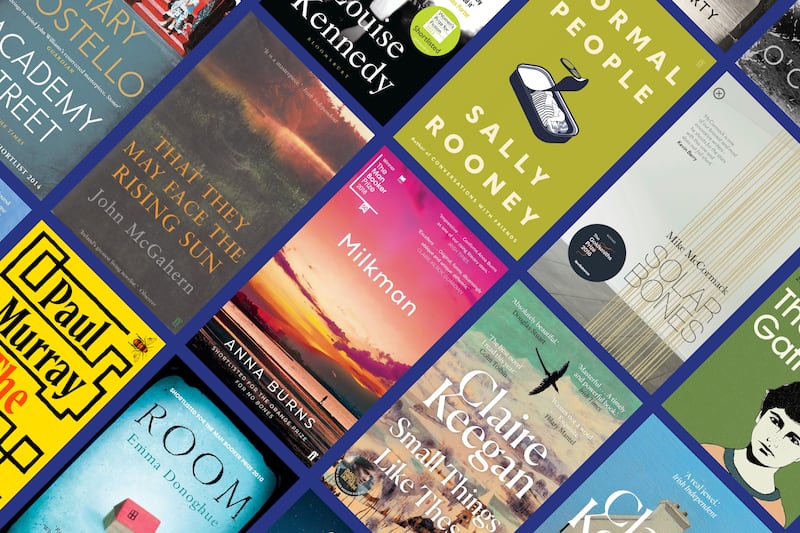The evenings are drawing closer and the Celtic festival of Samhain approaches. Time to sit by the fire and indulge in the safe and spooky scare that ghost stories give young readers. There is no better place to start than with Kieran Fanning’s Haunted Ireland: An Atlas of Ghost Stories from Every County (Gill Books, €24.99, 6+). From Antrim to Wicklow, Fanning takes the reader on a cross-country journey where creepy castles conceal chilling characters in their casements (The Banshees of Dunluce) and hedgerows hide the haunted spirits of a doomed romance (The Legend of Lover’s Leap).
Across the 32 counties, Fanning finds ghostly hurlers, phantom horses, a whole spectral army and a legendary island: hauntings can take many shapes. The stories themselves are retold in the clear and unadorned language of the folktale, while the geographical emphasis of the book brings a unique added context that young readers around the country will thrill to. A glossy hardback production, Haunted Ireland features full colour illustrations from Mark Hill, and would make an excellent gift book, whose gentle frights will keep on giving throughout dark winter nights.
For the reader who is curious about the Celtic origins of some of the creatures featured in Haunted Island, Síne Quinn’s The Faerie Isle: Tales and Traditions of Ireland’s Forgotten Folklore (Walker, £14.99, 6+) provides a fine introduction to the history of the spirits of Halloween, including headless horsemen, shape-shifters and sheeries.
Each creature is introduced, in both Irish and English, by way of their historical context, followed by a short story that illustrates the power of their mythic mischief in action. Did you know cats were feared in ancient Ireland as much as they were revered in ancient Egypt? That was thanks to the cat sidhe, faerie felines that could steal the soul of the dead. Or that the pooka people were so scared of usually took the form of a goat? The book is full of fascinating detail, and Dermot Flynn’s wispy illustrations perfectly suit the ethereal quality of the creatures.
There is an Irish component to Rachel Pierce’s Tales for the Brave (Scholastic, £14.99, 8+), another glossy hardback compilation of Celtic tales, from Ireland, Scotland, Wales, Cornwall, the Isle of Man and Brittany, with illustrations by Beibhinn McCarthy, Lauren O’Neill and Louise Dukes. The book is framed by an original campfire setting, where a druidess and a file have gathered with a community of followers on the eve of Samhain to share stories about the courage of their descendants, who are connected by myth and legend.
[ Monsters link: discover the Roscommon cave from which Halloween reputedly cameOpens in new window ]
For Irish readers, the Irish-set stories draw on familiar names (Cu Chulainn, Macha, the Tuatha de Dannan), but many of the other tales will be new, offering different contexts for female fearlessness in particular. Branwen, princess of Wales, for example, tells her own story of exile, while an owl flies down from the trees to narrate the curse that made her a woman and took her woman-shape from her. It is an effective storytelling device that both mimics and promotes the oral tradition.
The villain at the heart of Sword of the Sun by Sinead O’Hart (Piccadilly, £7.99, 10+) has walked straight out of Irish myth into the present day. “Old enough to have walked with the gods ... to have fought in battles that passed into legend ... to have watched humanity rise and fall and rise and fall again,” she is the Morrigan, brought low by the disappearance of her sister-selves, but ready to take on the modern world.
This is what she tells Brendan, anyway, the recently deceased grandfather of Ben. When Ben moves to Brendan’s remote country house, he discovers there is more to the stories his estranged grandfather told than just fantasy.
O’Hart gives the legendary elements of her story an admirable immediacy, crafting a filmic narrative that is anchored by real-world concerns of family tension and sibling solidarity. Ben’s necessary quest is established quickly, bringing to life an ancient Irish story in an original context, with a gripping and dramatic resolution.
Finally, for a pure fictional escape into an Irish mythic world, Eilish Fisher’s Fia and the Last Snow Deer (Puffin, £14.99, 10+) is an unforgettably atmospheric novel. Written in blank verse, it follows Fia “a girl as wild as winter” and her lifelong friend, a snow deer, Solas, on a journey of survival and self-discovery. Set in premodern Ireland, where the sun has disappeared, Fia leaves her starving family to protect Solas from the imperative of an age-old prophecy and the villagers’ hunger.
The verse format allows for a particular kind of poetry to emerge from Fisher’s lyrical language, while also gesturing towards inclusivity: this is the perfect type of book for struggling readers, presenting a strong narrative drive in a spare textual context. Dermot Flynn’s uncanny images and the use of white text on black pages provides plenty of visual interest too.
Fia and the Last Snow Deer is a stunning debut, which should quickly become a classic, with immediate appeal for fans of writers like Michelle Paver and Abi Elphinstone.














